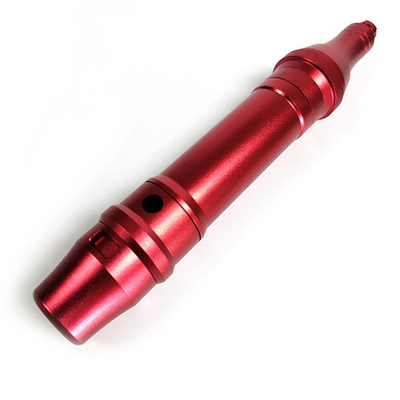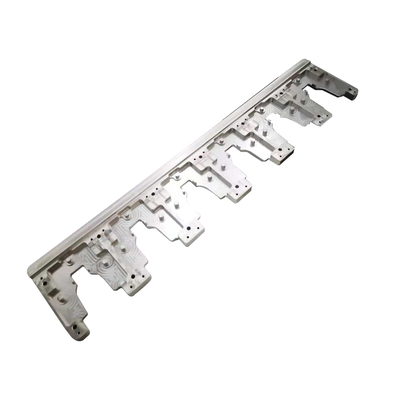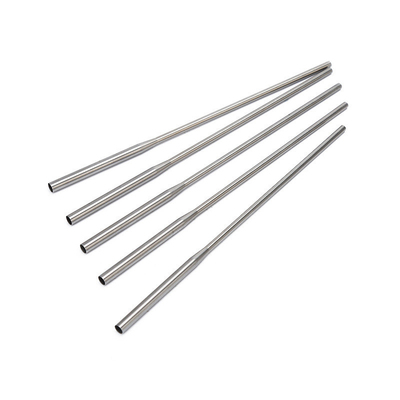3D printing market prospects can be expected
Introduction: 3D printing, one of the rapid prototyping technologies. It is a technology that uses adhesive materials such as plastic or powdered metal based on digital model files to produce objects by printing layer by layer.

3D printing is usually achieved by using digital technology material printers. It is often used in mold manufacturing, industrial design and other fields to make models, and then gradually used in the direct manufacturing of some products. Nowadays, the 3D printing mentioned by people is mostly based on the additive manufacturing of popular and simple desktop equipment. At many exhibitions, we can see 3D printers. Although it sounds simple, there are many uses for 3D printing. This article briefly counts several major industries where 3D printing is currently widely used for your reference.
1. Medical
In recent years, with the advancement of 3D printing technology, the depth and breadth of its application in the medical industry has been significantly improved.
In terms of the depth of application, early 3D printing can only manufacture cold medical devices, and now it has begun to develop in the direction of biologically active artificial tissues and organs; from the perspective of breadth, 3D printing has gradually evolved from the original medical model design and manufacturing. It can be developed to directly manufacture medical materials, implants, complex surgical instruments and 3D printed medicines.
A few months ago, scientists at the Zurich University of Technology developed a 3D printed heart. This incident almost caused a sensation in the entire medical technology industry. Although the experiment proved that the heart is not tough enough due to the material, it can only support use for 30-45 minutes. However, this new type of 3D printed heart is still a breakthrough compared to the artificial heart developed in the past. From the outside, it is no longer as bulky as a traditional mechanical pump.
In addition to 3D printed organs, bone defects, maxillofacial injuries, skull repairs, etc., cannot be treated with general repair products. 3D printed products provide effective solutions, especially these prostheses that need to be printed can be treated according to the patient's Customized production is carried out according to the characteristics of the situation.
In addition, 3D printing can also help doctors plan medical models, especially for complex operations, which can effectively reduce the risk of surgery and increase the success rate of surgery. 3D printing can also provide a more economical and rapid way to produce prototypes for the research and development of medical devices. Nowadays, with the addition of 3D printing, the medical industry is becoming more precise and personalized.
2. Manufacturing
The application of 3D printing in the manufacturing industry mainly has the following three advantages.
1. Cost saving: As far as traditional manufacturing is concerned, the more complex the shape of the object, the higher the corresponding cost. Traditional manufacturing machines need to manufacture objects through processes such as cutting and welding, while 3D printing uses layers to form physical objects. For 3D printers, manufacturing objects with complex shapes does not consume more time, skills or costs than manufacturing a simple cube. Therefore, 3D printing can save a lot of materials for companies and reduce waste by-products, thereby reducing costs.
2. Diversification of production: From the perspective of production materials, it is not easy for traditional manufacturing machines to combine different raw materials into a single product, because traditional machines cannot easily integrate multiple raw materials during the cutting or mold forming process. But in 3D printing, we have the ability to fuse different raw materials together to form new materials with unique properties or functions.
In addition, traditional manufacturing equipment has fewer functions and limited types of shapes. A 3D printer can print items of various shapes according to demand. There is no need to purchase new equipment at all. It only needs different digital design blueprints and a batch of new raw materials to achieve product diversification.
3. Time-saving and labor-saving: The traditional large-scale production line is built on the basis of the assembly line. The same parts are produced by machines and then assembled by robots or workers. If the product composition is more complex, the more time and cost it takes to assemble. And 3D printing can make the product integrally formed without the need for assembly. This not only shortens the production time, but also saves labor costs.
In addition, companies can use 3D printers to create customized products to meet customer needs based on customer orders. Instant production reduces the company's physical inventory and avoids product accumulation.
3. Construction industry
In the construction industry, engineers and designers seem to have accepted the use of 3D printing to design architectural models. In the process of traditional architectural design, drawings are not detailed enough, and it takes a lot of time to make architectural models. The emergence of 3D printing can not only quickly meet the needs of designers, the models are also more exquisite, and the cost is low, environmental protection can also save a lot of model production time.
The main advantage of 3D printing in the construction process is environmental protection and low cost. Industry experts have said that 3D printing buildings can reuse construction waste while avoiding the generation of new construction waste. Compared with the traditional construction industry, 3D printing can save construction materials by 30%-60%, shorten the construction period by 50%-70%, and reduce labor by 50%-80%. According to estimates, 3D printing can reduce construction costs by at least 50%.
Although 3D printing has many advantages in the construction industry, in the opinion of the editor, 3D printing is mainly used in the architectural design stage. Only a small number of construction projects can be delivered and it will take some time to achieve widespread popularity.
summary:
Many of the mainstream applications of 3D printing listed above may be seen in people's daily life, but there are also a small number of products such as 3D printed hearts that people have only heard of and never seen. But the application of 3D printing is far more than that. More and more industries have begun to integrate 3D printing technology into it.
By referring to the technical principles of ordinary printers, 3D printing provides people with a brand-new manufacturing model. Although the advantages it has shown are huge at this stage, if you think about it calmly, you will find that it also has some shortcomings. How to ensure the quality of the products manufactured by 3D printing? How to ensure the accuracy of 3D printing technology? How to realize the popularization of 3D printing technology and mass production of products? These are all issues that people need to face. I believe that with the joint efforts of people, 3D printing will bring us more surprises.
Link to this article: 3D printing market prospects can be expected
Reprint Statement: If there are no special instructions, all articles on this site are original. Please indicate the source for reprinting:https://www.cncmachiningptj.com
 PTJ® is a customized manufacturer that provides a full range of copper bars, brass parts and copper parts. Common manufacturing processes include blanking, embossing, coppersmithing, wire edm services, etching, forming and bending, upsetting, hot forging and pressing, perforating and punching, thread rolling and knurling, shearing, multi spindle machining, extrusion and metal forging and stamping. Applications include bus bars, electrical conductors, coaxial cables, waveguides, transistor components, microwave tubes, blank mold tubes, and powder metallurgy extrusion tanks.
PTJ® is a customized manufacturer that provides a full range of copper bars, brass parts and copper parts. Common manufacturing processes include blanking, embossing, coppersmithing, wire edm services, etching, forming and bending, upsetting, hot forging and pressing, perforating and punching, thread rolling and knurling, shearing, multi spindle machining, extrusion and metal forging and stamping. Applications include bus bars, electrical conductors, coaxial cables, waveguides, transistor components, microwave tubes, blank mold tubes, and powder metallurgy extrusion tanks.
Tell us a little about your project’s budget and expected delivery time. We will strategize with you to provide the most cost-effective services to help you reach your target,You are welcome to contact us directly ( sales@pintejin.com ) .

- 5 Axis Machining
- Cnc Milling
- Cnc Turning
- Machining Industries
- Machining Process
- Surface Treatment
- Metal Machining
- Plastic Machining
- Powder Metallurgy Mold
- Die Casting
- Parts Gallery
- Auto Metal Parts
- Machinery Parts
- LED Heatsink
- Building Parts
- Mobile Parts
- Medical Parts
- Electronic Parts
- Tailored Machining
- Bicycle Parts
- Aluminum Machining
- Titanium Machining
- Stainless Steel Machining
- Copper Machining
- Brass Machining
- Super Alloy Machining
- Peek Machining
- UHMW Machining
- Unilate Machining
- PA6 Machining
- PPS Machining
- Teflon Machining
- Inconel Machining
- Tool Steel Machining
- More Material





